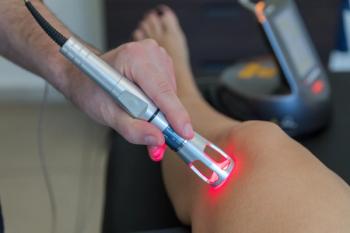
Combination treatment for scars proves effective
Combination treatments to reduce scarring have been shown to be effective without the need for aggressive surgical techniques that can lead to suboptimal results, researchers reported at AAD 2018 this week.
A growing body of research suggests that the chemotherapy drug 5-fluorouracil (5-FU) used in combination with fractional ablative laser treatment and corticosteriod treatment may be an effective treatment option for complex surgical or trauma scars, researchers reported at the annual meeting of the American Academy of Dermatology this week in San Diego.
This combination treatment is one of several advances in the field that can effectively treat scarring without the use of aggressive surgical techniques that can lead to suboptimal results, said Arielle N.B. Kauvar, M.D., of NYU Langone Health in New York.
“There are now a lot of safe, non-invasive techniques that now not only improve the appearance of the skin, but normalizes it,” she said.
Fractional ablative lasers can be used in combination with medications that suppress collagen growth introduced into the scars, including corticosteroid solutions and 5-FU.
Injected corticosteroids cause breakdown of the collagen and prevents further collagen growth, which contributes to the thickening of the tissue; however, they can weaken the tissue and result in the scar spreading, Dr. Kauvar said. They may also cause an increase in number of blood vessels, leading to reddening of the scar.
Another option is injections of 5-FU, a strategy recently deemed a
In a randomized clinical trial including 69 patients with keloids and hypertrophic scars, the combination of 5-FU, TAC, and 585-nm flashlamp-pumped pulsed-dye laser treatment offered more significant improvements in efficacy measures and better patient acceptability versus 5-FU and TAC, according to the investigators.
While corticosteroid injection decreases production of collagen, 5-FU works by inhibiting fibroblast proliferation, tissue culture studies suggest, and it also appears to inhibit collagen gene expression in fibroblasts. Using them together has one particular advantage. “You're limiting the amount of corticosteroid you use, you can obviate some of the side effects of the corticosteroid,” she said.
5-FU can either be injected into the dermis, as is done traditionally, or applied at the same time as laser treatment.
“When using fractional ablative laser, you create evenly spaced microscopic wells that can then essentially be filled with the medication, and you can have even distribution of the corticosteroid and the 5-FU throughout the scar, whereas if you were injecting it in various locations, but you wouldn't be able to permeate the scar tissue the same way,” she said.
Another dramatic advantage of combination therapy with fractional lasers, corticosteroids and 5-FU is that we can reduce the contractures that develop with severe trauma or burn scars that inhibit mobility. Patients who at one time could not open hand, their mouth or straighten a leg, can now do so after these combination laser-drug therapies, allowing them to function more normally.
TREATING SCARS FROM SELF HARM
Another recent advance in non-invasive approaches is laser treatment for scars that result from deliberate self-harm behaviors such as cutting with a knife or razor. Dr. Kauvar said these wounds tend to heal with thick, red scars, and are traditionally very resistant to treatment.
“It turns out that we can treat those with a combination of a vascular laser and a fractional ablative laser at the same time and that's something new,” she said.
Although data is still emerging, some researchers have documented their success with certain lasers. Researchers in Germany
Although noninvasive, nonsurgical scar removal strategies may take months of therapy and multiple laser modalities to produce a positive result, they can be done without involved and aggressive surgical approaches that can have poor outcomes.
“The traditional approach has been to perform scar revisions-cut the scar out and then replace one kind of scar with another sometimes disfiguring scar if they have to make a long incision. And sometimes, that scar will end up behaving like the original scar, and you have not gained anything, except now you’ve lost some skin surface area,” she said.
By contrast, the noninvasive approaches offer an alternative to do procedures safely and leave the patient with more appearing and feeling skin – texture, color and pliability improves. “I think the most important message is that we can give these patients hope,” Dr. Kauvar said. “When you erase the scars, you also often reduce the constant reminder of the trauma associated with the accident or event, which is really life-changing for patients, and I think it's important for people to think about scars in that way.”
DISCLOSURES
Dr. Kauvar reported disclosures related to Allergan, Inc., Lumenis, Sebcaia, Inc., and Syneron, Inc.
REFEENCES
Newsletter
Like what you’re reading? Subscribe to Dermatology Times for weekly updates on therapies, innovations, and real-world practice tips.
















